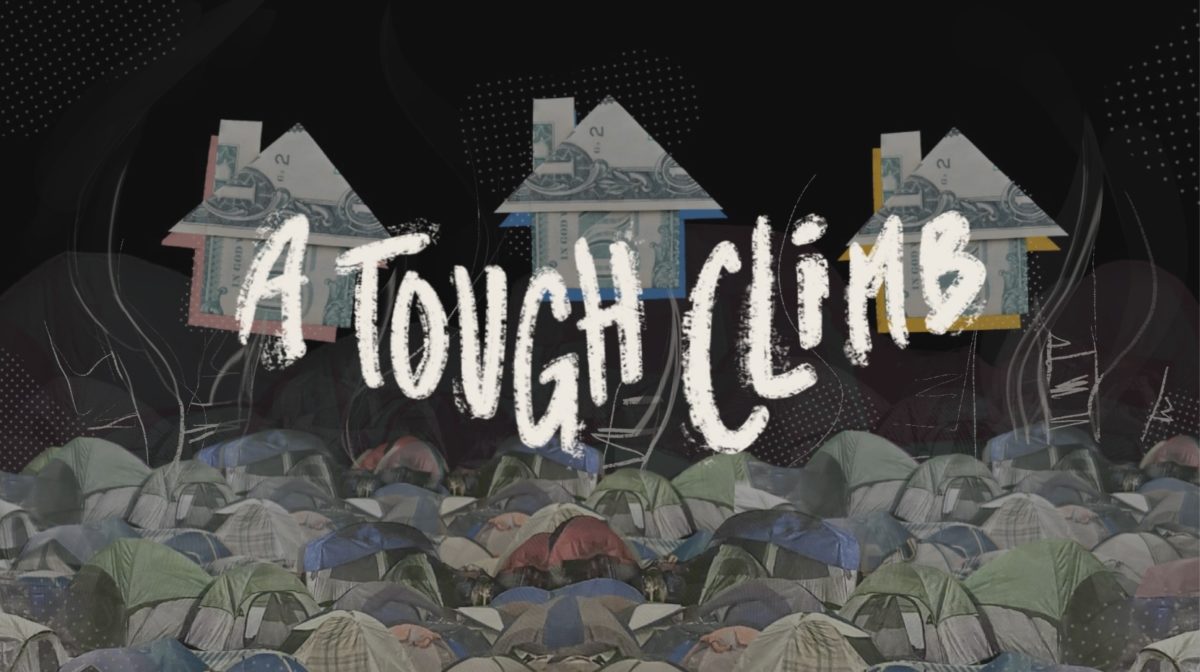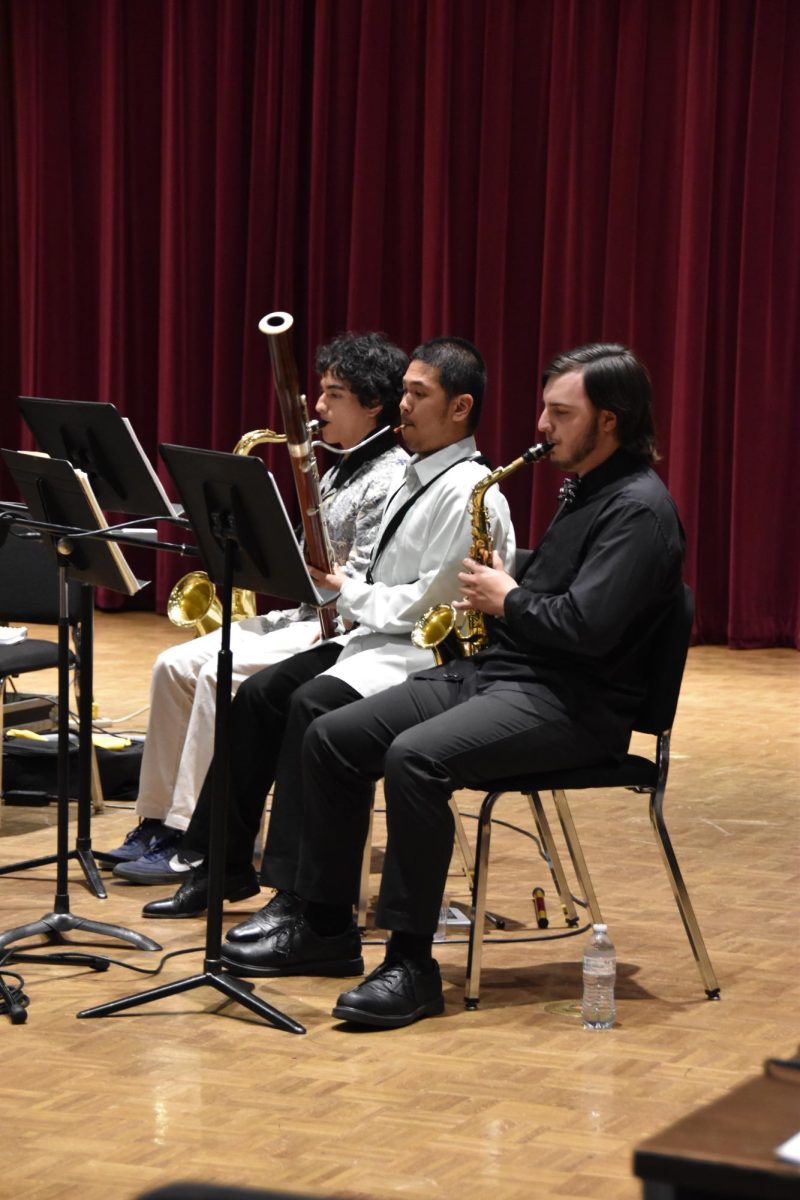
Editor’s note: This is the seventh part of a nine-part project capturing the housing reality in Contra Costa County. Conversations of homelessness and lack of affordable housing have been ongoing for decades, but what progress has been to solve this issue? The Experience’s housing project, “A Tough Climb,” was designed to give readers a better understanding of the struggles many face and the steps being taken to improve housing accessibility and security for all.
Antioch is doing what it can
Antioch Mayor Lamar Thorpe thinks these numbers are “terrible, just absolutely terrible.” Since he was elected to office in November of 2020, and even during his time as a council member since 2016, Thorpe’ priorities were to address police reform and homelessness. At first, he was hesitant to join the newly formed Homeless Encampment Taskforce as homelessness is a tricky and complex issue.
“There is no one path into homelessness just as there is no one path out of homelessness,” said Thorpe.
But Thorpe’s mind changed, as he joined this task force to help relocate people in encampments and get their stories. The task force’s work and findings led the City of Antioch to set aside money to help unhoused individuals for the first time. The city gave out hotel vouchers, laundry vouchers and similar resources to help them, “but obviously that doesn’t solve homelessness,” said Thorpe.
Antioch has also gone a step further in opening an intermediate program and leasing a hotel for unhoused residents to stabilize them and get them ready for permanent housing.
“We put people there anywhere between three to six months to stabilize them, particularly if they have a drug addiction or mental health problem,” said Thorpe.
All of these changes and programs have come after years of consulting and planning. New positions are needed to help facilitate growth for these programs, but preparation was essential to roll resources out. Much of this was because Antioch hasn’t done something like this before.
“Cities don’t do this type of stuff. This is the county’s responsibility,” said Thorpe. “Sometimes the county doesn’t have anybody ready to take on permanency. And in addition to that, they have a backlog from the intermediate services that are needed to put these residents into permanent housing.”
As there are resources available in the county, Thorpe doesn’t think it is enough to provide people with permanent housing.
“Cities are limited in what they can do, to the extent that we want to make sure we can create programs to help people not fall into homelessness with rental assistance,” said Thorpe, “but we don’t have that capacity, we don’t have a billion dollars like the county does.”
For now, Antioch is doing what it can afford to help unhoused residents get assistance. Their shower program and the opening of a hotel is all the funding can allow for. But this homelessness spike is still occurring.
Brentwood lacks space, funds
Brentwood is another city in Contra Costa County facing this epidemic of unhoused people, but numbers vary. Antioch makes up 11.1%, (342 people) of the countywide homeless population. In contrast, Brentwood holds about 69 unhoused individuals or 2.2% of the countywide homeless population, according to their 2023-2031 Housing Element.
Despite this, homelessness is still a massive issue in the eyes of Brentwood Vice Mayor Susannah Meyer, who believes that this issue isn’t going to be solved just by building houses.
Brentwood has taken steps in the past to help those who are unhoused and to even help promote more inclusionary housing. In recent years, Brentwood has gone as far as to prohibit in-lieu fees, which are fees developers could pay to exclude the implementation of affordable housing in their projects.
But Brentwood is starting to run out of land to build on. “We are pretty close to the build-out in Brentwood. I think we are at 80%,” said Meyers.
Citizens are realizing this and pushing back against new housing projects, citing that the city’s current infrastructure can’t support the influx of traffic and school enrollment rates that these housing developments would bring, said Meyers. It is for these reasons that Meyers pushes for housing as well as the building of infrastructure to support those already living in the city.
Still, Brentwood has to expand. The state set a Regional Housing Need Allocation or the RHNA for all cities in California to follow and Brentwood must accommodate 1,522 housing units. In Meyers’ eyes, these numbers are flawed.
“There was an audit done on the RHNA numbers and the methodology it took to get there was flawed,” said Meyers, “The numbers are taken into consideration as far as what your current numbers are and what your housing availability is. But none of the other factors are considered for this.”
Meyers also cites new legislation as a potential inhibitor to fair and affordable housing. But she doesn’t just want to house individuals, “we need people to feel at home and welcome.” Meyers doesn’t want to do that by simply bringing in more resources.
These resources, such as general funding from the county and programs within the city, would be made to help those unhoused within the community. But Meyers’ aim is to help these people out as soon as possible.
“This is a controversial statement too, but the more resources you bring into your city; the more homeless you are going to bring into your city,” said Meyers.
Because of this, Meyers advocates prevention of homelessness more so than accommodation.
“If you were to look at it as prevention of homelessness, I would vote for that,” said Meyers, adding, “For a shelter itself, I’m still not sure how that will help the people that we have on our streets that don’t want that kind of support.”
As it stands in Brentwood, most of the unhoused have been offered treatment from police and city officials, but turned down the offer upon hearing of the strict curfews and regulations in place. While Meyers is sympathetic to those who are unhoused, she would prefer to help those who need it.
“I think we need more resources. I think we need more non-profits focusing on this. I think the county CORE system and H3 housing are doing some good work, but I don’t know, it’s not enough.”
The heart of the issue boils down to just what the city can do and according to Meyers that isn’t much.
“The state as they take more and more local control away from us, the less say that we are going to have when it comes to what we can say yes or no to within our city limits,” said Meyer.
While Brentwood tries its best to provide affordable housing and resources for unhoused individuals, they need more resources to do so and are beginning to run out of land.
Oakley lacks resources
Oakley has few resources available given how recent of an inclusion they are to the County. They get a small portion of tax splits and overall low resources to put towards more affordable housing projects.
Other cities in Contra Costa County are facing similar situations to this and some of the smaller cities like Oakley have low priority for solving homelessness and housing insecurity.
Oakley as a whole is one of the cheapest areas in the Bay Area. Homes in Oakley go for around $664,000, about several hundred thousand dollars cheaper than the median home price in the Bay Area. Yet Oakley is a significantly smaller city.
The relatively low market prices give a hint as to how much Oakley receives from the state, which according to Oakley Mayor Aaron Meadows, “is low.” After all, Oakley has only been a city for around 24 years.
“When we incorporated as a city, the tax split that the county gave us was low,” said Meadows, adding, “we have low resources.”
Oakley does have affordable housing laid out and listed in their zoning areas, but this is almost as far as the extent of support is available from Oakley itself. The city only has a set budget to contribute to fair housing and Meadows said Oakley is doing all it can afford to do.
Oakley is described in its 2023-2031 Housing Element as a “bedroom community” or a community that is largely inhabited by people to commute for work. Since there are few jobs in Oakley, the housing element reports that around 92% of residents leave the city for work.
While it has improved the number of jobs in recent years,Oakley has had mostly the same priority in terms of housing.
“Why isn’t San Francisco building low-income or workhorse housing? Why does it have to be dumped onto us? These citizens have to commute to San Francisco for the jobs,” said Meadows.
Meadows does think homelessness is a big issue and it is one being felt in multiple cities, but is a “state and county issue, not a city issue.”
Pittsburg is making progress
Pittsburg doesn’t seem to be running into too many issues when providing affordable housing. Recent projects and programs show just how much progress they are making.
While Oakley has few resources to work with to put toward affordable housing, the opposite is taking place in Pittsburg. Although it has a similar housing market to Oakley in which the houses in the area are cheaper than most in the Bay Area, they also have less stock. Yet in recent years, the city has been working to increase the number of affordable houses.
According to Pittsburg Mayor Shanelle Scales-Preston, this effort has made considerable progress within the last 10 years. With Pittsburg’s growing population and a previous past with housing insecurity herself, Scales-Preston says that providing housing of all kinds is extremely important.
“We are always looking at creative ways to build affordable housing [through our CDBG funding,]” said Scales-Preston.
Thanks to this state-provided funding for community development projects, areas such as Gonzales Village and Veterans Square were built in an effort to provide housing to the unhoused of every demographic. Housing is still being built in Pittsburg and there are several ideas already in place within the City Council to improve the stock of affordable housing.
“We are looking at Bliss Avenue to build all affordable housing on,” said Scales-Preston.
Even with all of these housing developments, Pittsburg also works with St. Vincent De Paul, providing funding for their health services and food programs that are in place to help the unhoused residents of Pittsburg. Within the last year, Pittsburg has also collaborated with Bay Church as well as New Destiny Church to open up a shower program in the parking lot of St. Vincent De Paul. The unhoused are also able to receive haircuts thanks to a local willing to help.
“We have a local barber here in the city that comes out twice a month,” said Scales-Preston.
Pittsburg also is the home of one of the only homeless shelters in East County.
“[Delta Landing] is a new transitional housing for residents,” said Scales-Preston. “We are excited to have that here and to provide that.”
It seems as though Pittsburg isn’t running into the same issues that other cities are when trying to roll out resources to help out unhoused residents, and Scales-Preston would agree.
“We are constantly trying to figure out ways to build affordable housing,” said Scales-Preston. “I am blessed and lucky to work with a council that supports [continuing] to provide affordable housing stock here within the city.”
For the foreseeable future, Pittsburg is dedicated to working with its housing authority to provide more housing stock and working with community organizations to provide assistance and relief for the unhoused residents of Pittsburg.
Editor’s note
A Tough Climb is a nine-part project that addresses housing insecurity in Contra Costa County from diverse perspectives. Check out the other related stories.
- Part 1: Special project on housing insecurity
- Part 2: Reese Clayton shares housing struggles
- Part 3: Mary Grigsby grapples with housing reality
- Part 4: Homes empty, while streets are filling
- Part 5: Recent changes coming to the county’s housing market
- Part 6: The cost to make affordability a reality
- Part 7: Cities respond to housing insecurity
- Part 8: Non-profits work to be part of the solution
- Part 9: Housing resources available for residents








